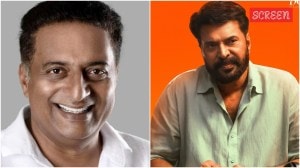Tata OK, Buy-Buy
The Corus deal is like Ratan Tata’s other decisions: ‘strategic’ with long-term perspectives

If there is one word that Ratan Tata has been working with long before he took charge as chairman of the Tata Group in 1991, it is strategy. As far back as in 1983, studying the then lethargic group under a controlled political economy regime (it sold whatever it produced), he wrote what he called a Strategic Plan. Under this, he wanted the group to embrace technology, to understand a competitive climate that was to come a decade later and give it a more consumer oriented thrust. Seventeen years later, he drafted the Vision 2000 document, again powered by strategy. Today, as the 1962 Cornell BSc graduate in architecture and structural engineering redesigns, restructures and re-engineers a new Tata Steel through India’s biggest-ever acquisition, the purchase of Corus, the keyword again is strategy.
Notwithstanding the 10.5 per cent fall in the share price of Tata Steel as it acquires the UK based Corus and becomes Europe’s second largest steel company and the world’s fifth, the price of 608 pence per share says Tata is a ‘strategic price’. Strategy, however, is married to another phrase — long term — and commenting on the fall in stock price, he said, the market is taking a short-term view, a harsh view, and hinted that perhaps it is making a mistake. The life of a corporation, he said, is longer than the last quarter’s results or the last acquisition and the accompanying equity dilution.
In theory I am a long-term fundamentalist, but with Tata this fundamentalism acquires another dimension, the power of hindsight. A year after Tata took charge as chairman, in my first job while working for a business magazine I recall his ‘vision’ of diversifying Tata Motors from trucks to cars. We had laughed as the Tata Sierra, a good looker but nevertheless carrying the soul of a truck, hit the market. It did well. Later, we questioned the Indica and its later variants. It did well. We are still sceptical about his Rs 1 lakh car. It is likely to do well too. All through he has delivered the goods, serviced a market, created it somewhat. All these decisions were ‘strategic’ with long-term perspectives, but it took the market many years to figure it out and the share languished before turning around.
Looks like the Corus takeover and its aftermath are headed the same way. What the Tata Group has acquired for $13.65 billion of enterprise value or nine times earnings before interest taxes and amortisation — Laxmi Mittal paid 4.6 times for Arcelor — is about 18 million tonnes per annum of additional capacity, which takes the total capacity to 23 million tonnes. This is almost like hitting a century in its 100th year of formation. Already the world’s lowest-cost producer of steel, this acquisition can also be priced on a time basis — it would take three years for a greenfield project of this size to come up while this inorganic purchase, at a time when steel prices are on their way up and are likely to remain there even taking into account the cyclical nature of the industry, gives it invaluable capacity right away.
Which is something only the Warren Buffetts or the Peter Lynchs can understand, not traders or speculators. It is this value that Tata brings to the table when he says that shareholder’s interests have not been jeopardised. The results of this acquisition will come in three years’ time — the benefits will start showing within a year but the complete synergies, which should add up to $300-350 million per annum to the company’s bottomline, will come by 2010. Going a step further, Tata Steel managing director B. Muthuraman says that the country has a tremendous future in steel, that it can be a leader, and that “this acquisition could be a trendsetter for Indian steel industry”. Maybe.
But we need to look beyond India and economic patriotism to put this deal in the right perspective. For a company to operate with any respectable scale today, it has to look beyond its country of origin, of raw material supply, of product sales, of workers. The company today has to have global pipelines of capital and revenues. Even cultures. It is such a company that Tata is moving towards with the Corus acquisition — headquartered in India, selling in India and Europe, financing from India and the world, through debt and equity (something the markets don’t like and hence the 10.5 per cent fall in price), sourcing raw material from captive mines which gives Tata Steel a strategic cost advantage, people from across the world including the CEO of Corus who, “will remain CEO of Corus”.
What is a little unnerving is the story on profit margins. The margins of Tata Steel stand at 42 per cent, those of Corus at 10 per cent. The latter is a much larger company than Tata Steel. Are we, therefore, going to see a fall in margins of the combined entity from 42 per cent to something closer to the world average of 18-20 per cent, say 22-24 per cent or so? And if that is indeed the case, will increased sales be able to make good the fall and service profits growth? Both Tata and Muthuraman say there will be restructuring of costs, increases in productivity and suchlike. What is lost in the short-term margin contraction will be made good in long-term asset utilisation, the key being turning around capacity to produce more efficiently. But the question that every M&A participant or analyst needs to ask is: is it worth the deal, will productivity increase or is it only increasing scale and size — and with it, business pride, at the cost of shareholder value?
The answers will come three years from now. A group known to deliver long-term value and one whose face was changing from commodities to products and services, will retrace its path and become commodity-heavy with this acquisition. But barring the capital guzzling characteristic, commodities like steel are going to be around for a while as India and China build themselves. Is Tata’s strategy, therefore, to derive from commodities the pricing power and returns that fast moving consumer goods have? Fifteen years from now, we’ll probably know for sure, but given his track record, I would bet my forecast with him — strategically.



- 01
- 02
- 03
- 04
- 05




























